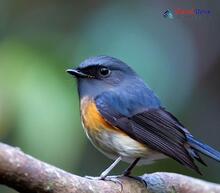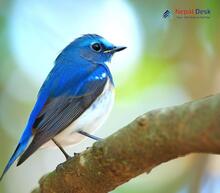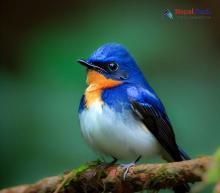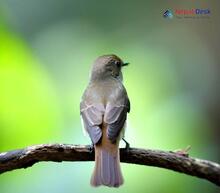Nature never fails to amaze us with its diverse range of species and intricate evolutionary pathways. Among the marvels of the avian world is the Ficedula genus, a group of fascinating songbird species that captivate bird enthusiasts with their unique characteristics. In this article, we will delve into the various aspects of the Ficedula genus, from their evolution tree and taxonomy to their morphology, ecology, and presence in Nepal.
Unraveling the Evolution Tree
The Ficedula genus belongs to the Muscicapidae family, closely related to chats, old-world flycatchers, and thrushes. These birds boast a complex evolutionary history that dates back millions of years. Through extensive studies based on genomic data and morphological comparisons, scientists have been able to decipher their phylogenetic relationships and diversification patterns. This understanding has shed light on how these species have adapted to different environments across Asia and Europe.
Exploring Taxonomy
The taxonomy of songbirds within the Ficedula genus is continually shaping our understanding of their diversity. Currently consisting of around 30 recognized species, there is still much taxonomic research needed to reveal cryptic species that are difficult to distinguish simply by physical appearance. Ongoing work aims to identify these hidden gems through molecular markers that will allow for more accurate classification.
Some of the most well-known species within the Ficedula genus are:
1. European Pied Flycatcher (Ficedula hypoleuca)
2. Collared Flycatcher (Ficedula albicollis)
3. Semicollared Flycatcher (Ficedula semitorquata)
4. Taiga Flycatcher (Ficedula albicilla)
5. Snowy-browed Flycatcher (Ficedula hyperythra)
The Ficedula genus encompasses many more species than those listed here, but these examples should give you a taste of the incredible diversity and beauty found within this group of birds.
Distinct Morphology
Ficedula species are generally small- to medium-sized birds characterized by noticeably vibrant plumage. Males often exhibit eye-catching colors such as black, white, blue, or orange, while females tend to have subtler shades of brown and grey. Depending on the environment they inhabit or behavior they showcase, some species possess uniquely adapted features like longer tails or broader beaks. These fascinating morphological differences contribute significantly to their identification and classification.
A Peek at Their Ecology
The habitat preferences and ecological roles of Ficedula birds vary between species and regions. From dense forests to open woodlands, these adaptable songbirds thrive in diverse environments. Typically feeding on insects and spiders, the Ficedula genus plays a crucial part in controlling pest populations and maintaining ecological balance. They contribute significantly to pollination as they disperse seeds from fruits they consume. Furthermore, the stunning melodies of their songs enrich the soundscape of natural habitats.
The Presence in Nepal
Nepal, home to a treasure trove of bird species due to its diverse geography and climatic conditions, naturally hosts a number of Ficedula species. Among those found are the famous Ultramarine Flycatcher, Taiga Flycatcher, and the sought-after Slaty-backed Flycatcher. Sachdeva (2014), Murton (1971) have mentioned over 20 Ficedula species out at Koshitappu Wildlife Reserve around Pokhara Valley. This rich avian diversity attracts thousands of birdwatchers from around the world to explore Nepal's incredible birdlife.
In conclusion, the Ficedula genus captivates us with its intricate evolutionary history, diverse taxonomy, fascinating morphology, and vital ecological roles. Nepal holds a special place in showcasing this beautiful group of birds within its biodiverse landscapes. Ongoing research and conservation efforts strive to expand our understanding and protect these captivating creatures for generations to come.




